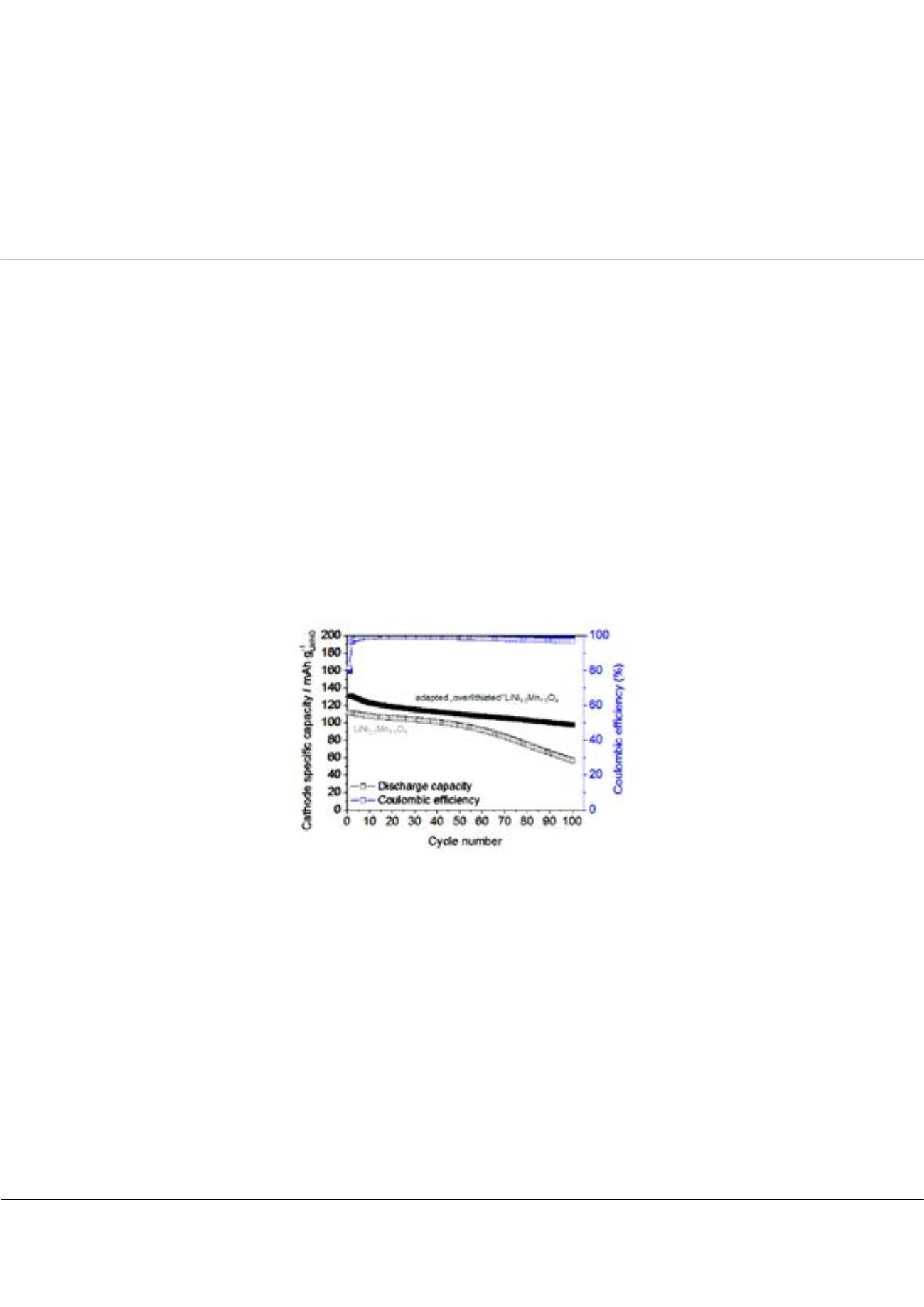

Page 41
conferenceseries
.com
Volume 8
Journal of Fundamentals of Renewable Energy and Applications
ISSN: 2090-4541
Battery Tech 2018
September 10-11, 2018
September 10-11, 2018 | London, UK
3
rd
International Conference on
Battery and Fuel Cell Technology
Materials development for advanced Li ion batteries
Margret Wohlfahrt-Mehrens
ZSW, Germany
L
ithium ion batteries are widely used in many portable applications and are the most promising energy storage systems
for future mobility and stationary applications. Worldwide, extensive research efforts focus on the development of high
performance, low cost and more sustainable materials for advanced lithium ion batteries. In this presentation, we describe
various strategies to increase the energy density of lithium ion batteries by combining high voltage and high capacity cathode
materials as nickel rich layered oxides or high voltage spinel type materials with silicon/carbon composites. An alternative
approach is the development of cobalt free cathode materials. Co-free, Li-rich Li
1+x
Ni
0.5
Mn
1.5
O
4
(0<x<1) compounds are
very promising candidates for high energy applications. The lithium‐nickel‐manganese oxide compounds can be tailored
with respect to composition in order to reach high capacities up to 250 mAh g
-1
with long cycling life. An adapted electrode
manufacturing process including a deep understanding of the interactions between powder properties, process parameters
and electrochemical performance is essential to get maximum cell performance. In addition, lithium plating can occur during
charging, which is a severe ageing mechanism and a potential safety risk. Adapted cathode materials with excess of lithium can
be used to compensate irreversible losses of silicon based anode materials and to prolong life time in full cells.
Figure 1
: Capacity retention of two Li ion cells Si//LiNi
0.5
Mn
1.5
O
4
(open squares) and Si//Li
1+x
Ni
0.5
Mn
1.5
O
4
with excess lithium adapted to irreversible loss of silicon (black
squares); capacity is referred to cathode material.
Recent Publications
1. M Marinaro, MWeinberger and MWohlfahrt-Mehrens (2016) Toward pre-lithiatied high areal capacity silicon anodes
for Lithium-ion batteries, Electrochimica Acta 206:99-107.
2. G Gabrielli, P Axmann, T Diemant, R J Behm and M Wohlfahrt‐Mehrens (2016) Combining optimized particle
morphology with a niobium‐based coating for long cycling‐life, high‐voltage lithium‐ion batteries. ChemSusChem
9(13):1670-1679.
3. M Mancini, G Gabrielli, P Axmann and M Wohlfahrt-Mehrens (2017) Electrochemical performance and phase
transitions between 1.5 and 4.9 V of highly-ordered LiNi
0.5
Mn
1.5
O
4
with tailored morphology: influence of the lithiation
method. Journal of the Electrochemical Society 164(1):A6229-A6235.
4. T Waldmann, B I Hogg and M Wohlfahrt-Mehrens (2018) Li plating as unwanted side reaction in commercial Li-ion
cells–A review. Journal of Power Sources 384:107-124.
Margret Wohlfahrt-Mehrens, J Fundam Renewable Energy Appl 2018, Volume 8
DOI: 10.4172/2090-4541-C5-062
















